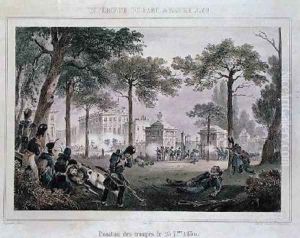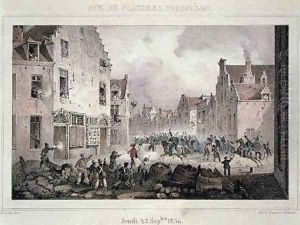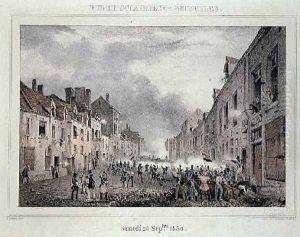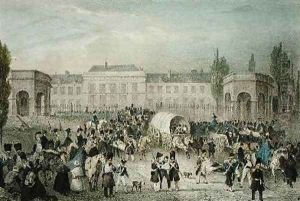Lauters, Paulus Paintings
Paulus Lauters was a Belgian artist born in 1806, notable for his contributions to the fields of lithography and painting during the 19th century. His work, which spans landscapes, city views, and genre scenes, reflects a keen observation of his surroundings and a dedication to capturing the spirit of his time. Lauters' lithographs, in particular, played a significant role in the popularization of this medium in Belgium, making art more accessible to the general public.
Lauters' career was marked by a fascination with the evolving urban and rural landscapes of Belgium, as well as the daily lives of its people. His approach to lithography was innovative, combining technical precision with a painterly touch that brought his prints to life. This was a period when the industrial revolution was transforming European cities and countrysides, and Lauters' work provides a valuable visual record of these changes.
Despite facing the challenges of an artist in the 19th century, including the need to constantly seek commissions and patrons, Lauters achieved considerable success in his lifetime. His works were exhibited in various salons and exhibitions, gaining him recognition and respect among his peers. However, like many artists of his era, Lauters' name became less familiar over time, overshadowed by the giants of the art world.
Today, Paulus Lauters is remembered as a master lithographer and painter who captured the essence of 19th-century Belgium. His contributions to the development of lithography are particularly notable, helping to elevate the medium to a form of artistic expression that could rival painting in its beauty and emotional impact. Lauters passed away in 1875, leaving behind a legacy that continues to be appreciated by art historians and collectors alike.



